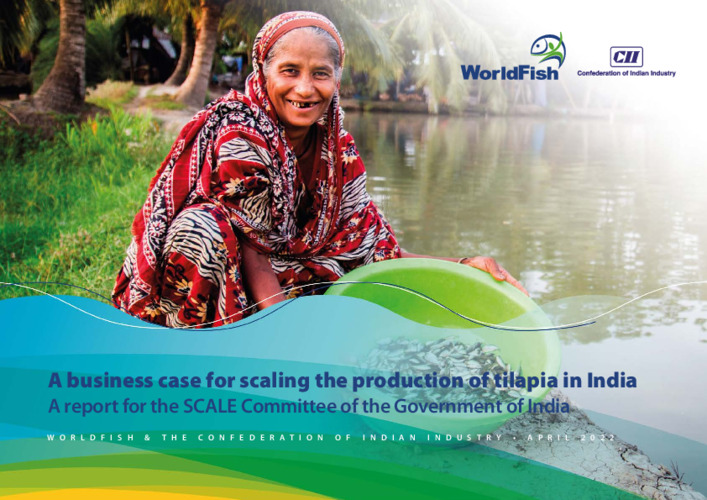Business Case for Scaling the Production of Tilapia in India: A Report for the SCALE Committee of the Government of India.

The Government of India has committed to a national target to increase fish production to 22 million metric
tons by 2024–2025.2 This commitment will benefit 28 million fishers and fish farmers, fish workers, fish vendors and other stakeholders who depend on aquaculture and fisheries for their livelihoods, and almost twice that number of actors along fish-related value chains. It will increase employment opportunities and incomes, empower women and help deliver food and nutrition security. These developmental outcomes are well aligned with the Sustainable Development Goals, the Government of India’s priorities as articulated in
policies such as Pradhan Mantri Matsya Sampada Yojana (PMMSY), and the strategic objectives of the authors of this report – WorldFish and the Confederation of Indian Industry (CII). As part of the SCALE committee’s work to advance the growth of the tilapia industry in India, WorldFish and CII have prepared this report to analyze the opportunities and what is needed to significantly expand tilapia production in India. WorldFish has played a major role in promoting nutritious and affordable tilapia globally since the 1980s, especially through its long-standing tilapia genetic improvement program which has widely distributed genetically improved farmed tilapia (GIFT) as a global public good. At present, more than 50% of the
global commercial tilapia production is based on GIFT or GIFT-derived strains. Building on its proven success at increasing production at scale for shrimp, India has carried out a ”best bet” species assessment and identified tilapia as a species to pursue based on its suitability for domestic production and rising demand in global markets. It is also a species that can boost production in Indian inland fisheries and help diversify current fish production. To this end, India has set a transformative and ambitious goal to produce
0.766 million metric tons of tilapia by 2026–2027 and 2.155 million metric tons, valued at about USD 4.398
billion (Rs. 32,105 crore), by 2032.
The anticipated year-on-year revenue potential from tilapia export is USD 1.135 billion, which is 8% of the
total target for Indian seafood export revenue of USD 14 billion by 2027. By 2032 India’s estimated revenue from tilapia export could touch USD 3.92 billion, contributing 15% of the targeted USD 28 billion of fish and marine produce exports from India. India has the required inland fisheries resources to spur sustainable growth in tilapia aquaculture in the coming decades. In 2018–2019, only 58% of India’s inland fisheries potential had been realized. However, to achieve the target of 2.155 million metric tons of tilapia by 2032, India needs to invest in tilapia production infrastructure, including hatcheries, grow-out ponds and reservoir cages. This investment represents a total capital expenditure of approximately Rs. 5,557
crore (USD 761 million) over 10 years. The proposed additional financial support needed by the sector to increase tilapia production – primarily in the form of subsidies and interest subvention4 – is estimated at Rs.
2,587 crore (USD 354 million) by 2032. Investing in boosting India’s tilapia production is predicted to bring a healthy return on investment of 24%–30%, provide new business opportunities, especially for young people and women, and earn foreign currency for India through exports. It will also ensure a steady supply of
affordable fish protein to significantly boost nutrition among domestic consumers.
Permalink
Date Available
Type
Publisher
Countries
Copyright
CC-BY-NC-4.0
Research Themes
Language